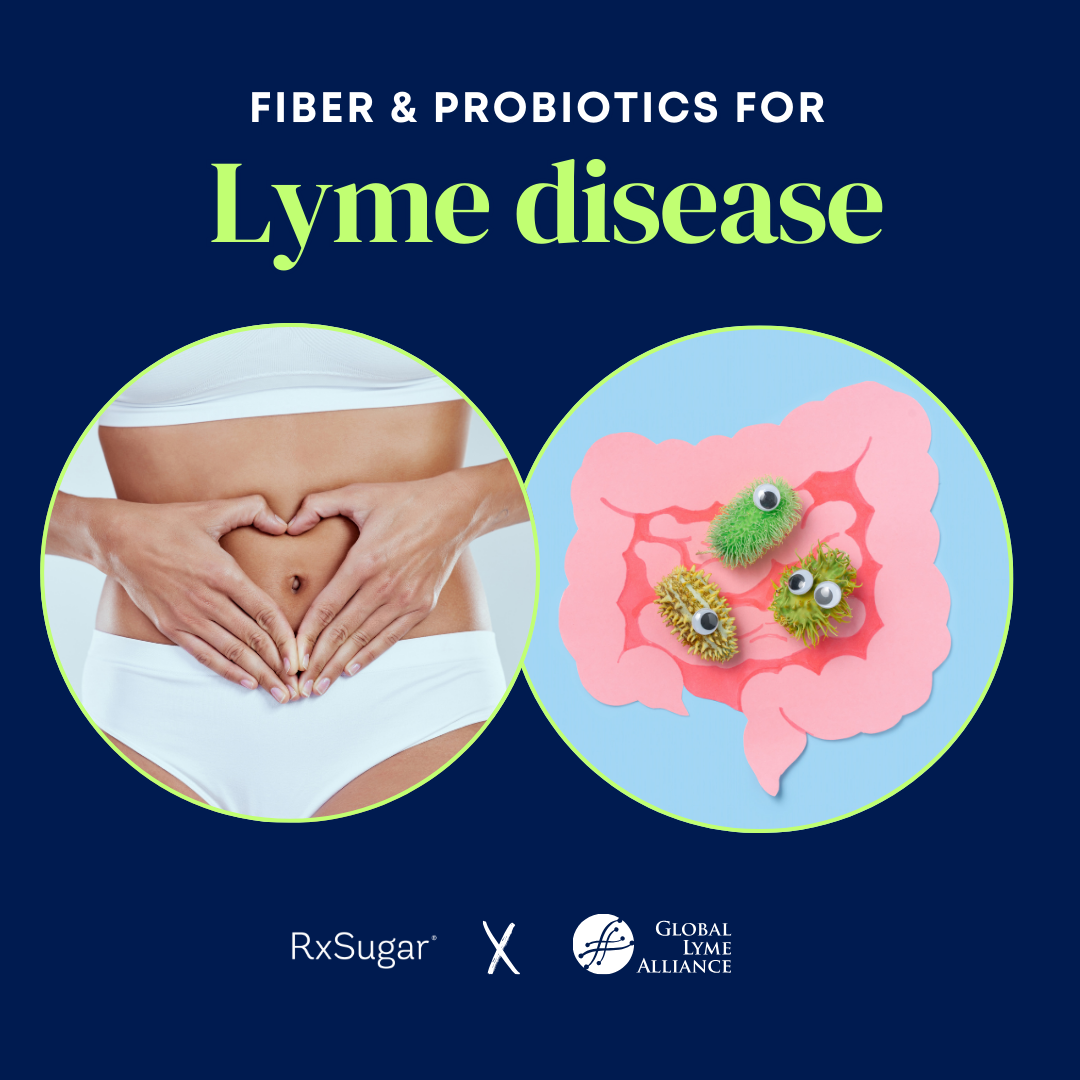
Tips for what to eat when you have Lyme disease
Many patients write to me asking about what is commonly known as “The Lyme Diet.” Since I’ve mentioned in previous posts that I stick to a low-sugar, gluten-free diet, people want to know why I do that, and what else they should eliminate.
“The Lyme Diet” can be defined in a few different ways. Most doctors would agree that it involves no sugar or gluten. This is because those foods can weaken the immune system, cause yeast overgrowth (candida), and cause inflammation. Many doctors also suggest eliminating dairy, since it can be inflammatory. In her book The Lyme Diet, Nicola McFadzean (Ducharme), ND lists these foods as the biggest problems for Lyme patients. She also stresses food allergy testing, dietary supplements, sticking with organic foods, and creating an individualized approach for each patient.
In their book Coping with Lyme Disease: A Practical Guide to Dealing with Diagnosis and Treatment, Denise Lang and Kenneth Liegner, MD recommend “a low-fat menu; an abundance of fresh or frozen vegetables; avoidance of caffeine [and alcohol and cigarettes]; avoidance of yeast-contaminating products; adequate vitamin supplements; and avoidance of chocolate, aged cheese, and broccoli for headache-prone patients.”[i] They also list nutritional supplements that they find helpful for Lyme patients.
Stephen Phillips, MD and Dana Parish take a slightly broader approach in Chronic: The Hidden Cause of the Autoimmune Pandemic and How to Get Healthy Again: “The best choice is a whole-foods, low-glycemic, vegan diet, though it can be hard to part with a good steak. For the carnivorous among us, an anti-inflammatory Mediterranean-style diet is better than our traditional Western diet that’s high in processed foods made with refined sugars and flours. The Mediterranean style, on the other hand, emphasizes fresh fruits and vegetables high in antioxidants (e.g. dark, leafy greens, berries, avocados); lean proteins (mostly wild), oily fish (e.g. salmon, herring, sardines) and less meat; nuts and seeds; fiber-rich whole grains (e.g. brown rice); legumes; and healthy fats like extra virgin olive oil, eggs, and flaxseed.” The idea, again, is to minimize foods that can cause inflammation, including sugary drinks, desserts, margarine, and processed foods. The authors also suggest “eating warm foods, as this induces relaxation.”[ii]
While there are common denominators in different dietary suggestions, it can be hard to determine what’s best for you, what to eliminate, and what to enjoy. As with Lyme treatment itself, there is no set protocol. Dietary choices depend on your own microbiome, your food allergies and intolerances, your nutritional deficiencies, your inflammation levels, and your medications. Here are some lessons I’ve learned as I’ve figured out my own “Lyme diet”:
- Think about nourishing, not depriving yourself. The idea isn’t to focus on what you can’t have, but to consider what foods will best help your body heal. Instead of searching for gluten-free cookies to replace your other treats, focus on the meal that comes before the treat and how that can give you good nutrition. I stick with some of the advice outlined above and generally eat lean proteins such as chicken and fish; complex carbohydrates such as brown rice and quinoa; and fresh fruits and vegetables like berries, apples, clementines, baby spinach, zucchini, and eggplant. Some of these foods, especially the citrus or the night shade vegetables, might not be good for other patients; this is why it’s important to do food and allergy testing, as well as vitamin and mineral testing, to come up with an individualized diet plan with your own Lyme Literate Medical Doctor (LLMD).
- Eliminate what your body doesn’t need: While many Lyme patients eliminate gluten, sugar, and dairy, for me, reducing dairy hasn’t made a difference with inflammation. In fact, I need that dairy to fulfill other dietary needs. For others, though, eliminating dairy makes all the difference. You’ll likely need to do some trial elimination and re-introduction, under the guidance of your doctor.
- Talk to your doctor about nutritional supplements: Your medication or your illnesses may deplete your body of important nutrients. Your doctor can run blood tests to determine what nutrients you’re lacking and can suggest supplements to help your body replenish. I’m wary of doctors who sell those supplements themselves; make sure the doctor has your health, not their financial gain, in mind.
- Eat small, balanced meals and snacks throughout the day: I struggle with hypoglycemia as a result of the co-infection babesiosis. To combat it, I make sure to have a mix of protein and complex carbohydrates at every meal and snack, and I don’t go more than four hours without eating.
- Hydrate: I never leave home without my water bottle. Partly this is due to excessive thirst brought on by my tick-borne illnesses, but also the fluid helps flush my system. My body is working hard to eliminate dead spirochetes and toxins, and I want to help it out as much as I can. To make sure I don’t wash away all my sodium and potassium, I also drink electrolyte-infused water with a pH of at least 9.
- Keep the big picture in mind: In my most acute phase of tick-borne illness, I was hyper-vigilant about my diet, refusing to eat even a bite of chocolate. My doctor finally helped me to see that enjoying a little bit of dark chocolate wouldn’t kill me. As long as you are sticking to your own “Lyme diet” in general, it is okay to indulge now and then. You just need to do so in moderation, and to weigh risks and benefits. I once asked my doctor what would happen if I had a glass of wine. He told me that I would probably feel awful for several days. To me, that risk wasn’t worth it. Eating a few too many naturally sweetened brownies sometimes gives me burning extremities. That’s a discomfort I’m willing to endure on special occasions, like my birthday, but it would not be healthy for me to do that every day.
- Think of this as a lifestyle choice, not a diet: People often ask me, “But can you have…” or, “How long will you have to be on this diet?” As long as my body is fighting tick-borne illness, I will be helping it by offering it the best nutrition I can. Being nutritionally healthy makes me feel good, and that’s a feeling that’s not easy to come by for Lyme patients!
Related blog posts:
How to Optimize Your Lyme Disease Recovery with Nutrition
STAY IN TOUCH:
References:
[i] Lang, Denise and Liegner, Kenneth, MD. Coping with Lyme Disease: A Practical Guide to Dealing with Diagnosis and Treatment (3rd edition). New York: Henry Holt and Company, 1997 (220).
[ii] Phillips, Steven, MD and Parish, Dana with Loberg, Kristen. Chronic: The Hidden Cause of the Autoimmune Pandemic and How to Get Healthy Again. Boston, New York: Houghton Mifflin Harcourt, 2020 (197-8).
The above material is provided for information purposes only. The material (a) is not nor should be considered, or used as a substitute for, medical advice, diagnosis, or treatment, nor (b) does it necessarily represent endorsement by or an official position of Global Lyme Alliance, Inc. or any of its directors, officers, advisors or volunteers. Advice on the testing, treatment or care of an individual patient should be obtained through consultation with a physician who has examined that patient or is familiar with that patient’s medical history.

Jennifer Crystal
Writer
Opinions expressed by contributors are their own. Jennifer Crystal is a writer and educator in Boston. Her work has appeared in local and national publications including Harvard Health Publishing and The Boston Globe. As a GLA columnist for over six years, her work on GLA.org has received mention in publications such as The New Yorker, weatherchannel.com, CQ Researcher, and ProHealth.com. Jennifer is a patient advocate who has dealt with chronic illness, including Lyme and other tick-borne infections. Her memoir, One Tick Stopped the Clock, was published by Legacy Book Press in 2024. Ten percent of proceeds from the book will go to Global Lyme Alliance. Contact her via email below.




-1.jpg)


